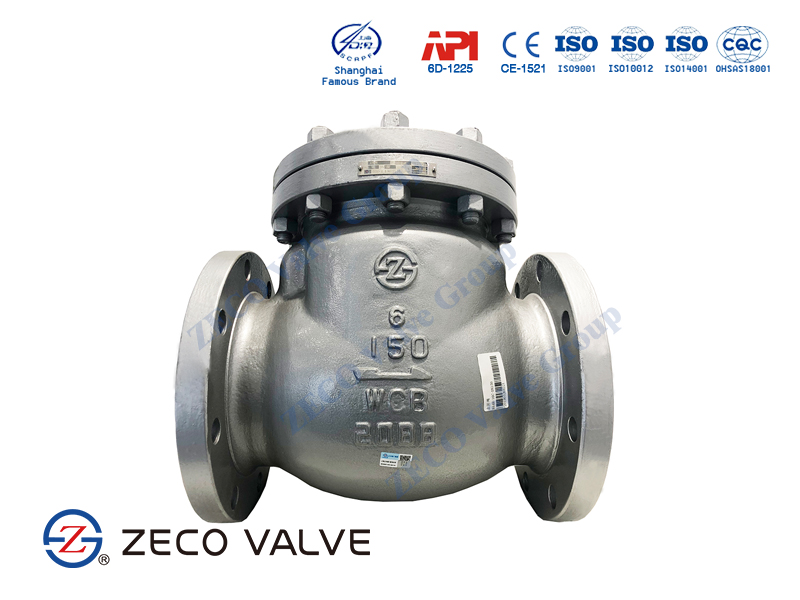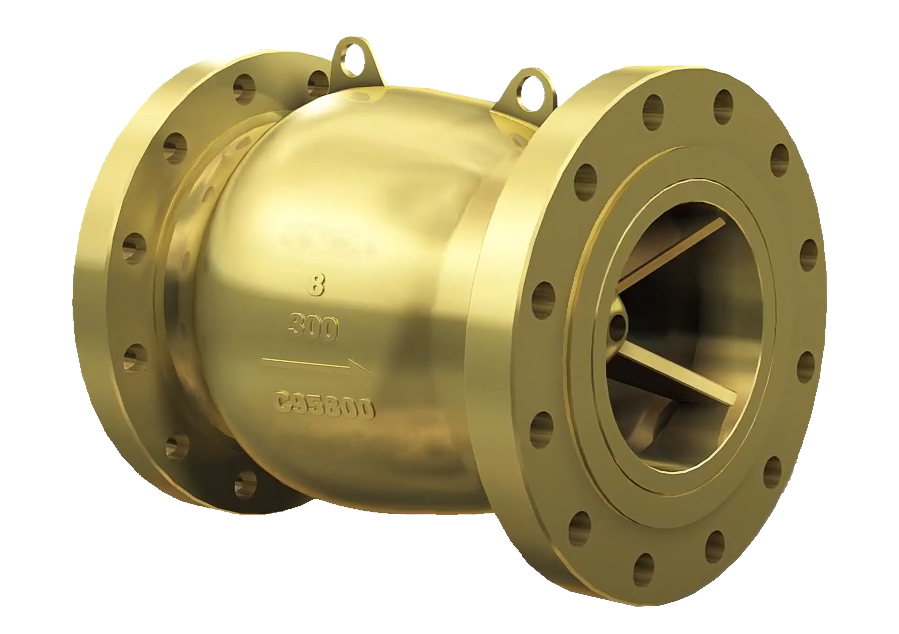Check valve: the most important valve in the processing system
Main functions and functions of check valve:
- They only allow fluid to flow in one direction.
- They prevent backflow or siphoning.
- They maintain the pressure in the system.
- They protect other equipment, such as pumps and water tanks.
- Center-guided check valve with upstream supercharger
Types of Check Valves
There are many styles of check valves, they use different mechanisms to prevent backflow, including discs, balls, pistons, and other forms. The flow can be straight, angled, or lifted. Each type of check valve has its advantages. Swing check valves allow the use of pigs through the pipeline to clean or inspect the pipeline. Others perform best in vertical flow. Some can be repaired online. Some contain solid or fibrous materials that can withstand flow.
Accessories can fine-tune the performance of the valve. Various combinations of levers and counterweights, springs, air cushions or shock absorbers can help control the closing speed of the valve to match the application and prevent valve slam and water hammer problems. Other accessories, such as position indicators, provide operational information. In many applications, it is best to include a backwash
device to remove any debris that has accumulated on the bottom of the valve.
Swing Check Valve
A basic swing Check valve consists of a valve body, a bonnet, and a disk that is connected to a hinge. The disk swings away from the valve seat to allow flow in the forward direction, and returns to the valve seat when the upstream flow is stopped, to prevent backflow.
The disc in a swing-type Check valve is unguided as it fully opens or closes. There are many disk and seat designs available, in order to meet the requirements of different applications. The valve allows full, unobstructed flow and automatically closes as pressure decreases. These valves are fully closed when the flow reaches zero, in order to prevent backflow. Turbulence and pressure drop in the valve is very low.

Axial Flow Check Valve
The main purpose of an axial flow check valve is to allow flow in one direction while prohibiting or stopping flow in the opposite direction. It is normally stationary in the closed position. The performance of axial check valves in terms of low pressure loss, stable operation, and dynamic behavior play a vital role in critical check applications such as the protection of rotating equipment and systems.

Lift Check Valve
This type of valve is typical in applications requiring high-pressure service. Effective with a high-velocity flow, lift check valves can be installed either horizontally or vertically (in pipelines with an upward flow). Types of lift check valves include piston type and ball type. This type of valve can prove more leak resistant.
Valves suitable for the job
Since the flow of fluid opens the check valve, it is important to understand the fluid and its characteristics. Is the fluid a liquid, a gas, or a multiphase – solid in a liquid stream or a liquid in a gas stream? What is the normal volume flow rate? Is the flow horizontal or vertical? Up or down? What will be the temperature and pressure of the flow? What are the physical properties of the fluid, such as density and viscosity? What are the chemical properties of the fluid, such as its pH and vapor pressure? Is it corrosive? Is it abrasive?
These flow characteristics determine which style of the check valve can complete the work, as well as any special material requirements for the check valve and valve trim.
What if the check valve is the wrong size?
Too large a check valve results in a low flow rate, which makes it impossible to keep the valve open all the time. This can cause instability and the valve may vibrate or vibrate. Conversely, frequent valve/spool replacement, and other system shutdowns due to repair or replacement of check valves, will lead to premature mechanical wear of the valve and possible additional maintenance costs.
A check valve that is too small will cause the flow through the valve to be too high, resulting in unnecessary high-pressure losses in the system. It can also create excessive turbulence in the flow, which can cause valve instability and increase mechanical wear, leading to higher maintenance costs. Similarly, a higher flow rate through a valve that is too small may increase corrosion and wear inside the valve.
Check valves play an important role in protecting other components in the flow system. In order to complete its work, each check valve must be of the type suitable for the application and needs to be sized correctly to keep it fully open at normal operating flow. The correct choice and size of the check valve can have a long trouble-free working life. Besides swing check valve and axial flow check valve. There is another high-quality piston check valve was designed.
Related Tags :
Ten articles before and after












